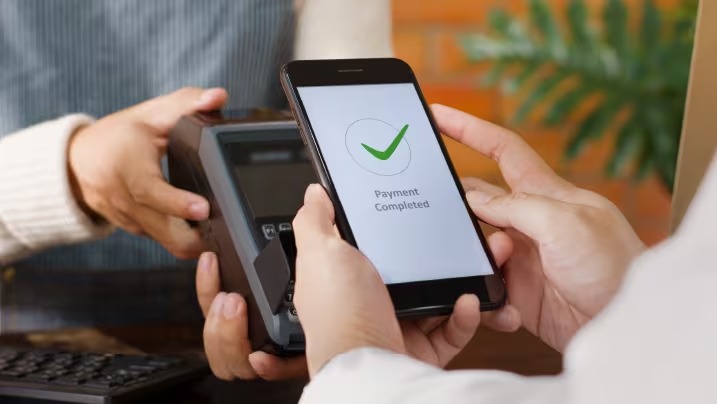 Image Source :IDFC FIRST Bank
Image Source :IDFC FIRST Bank
India is on the cusp of a digital payment revolution as the Bank of Cashless Reserve Payments (BCRP) prepares to launch an innovative platform designed to phase out cash transactions by 2026. Leveraging advanced Indian technology, this groundbreaking initiative aims to transform the way financial transactions are conducted, ushering in a new era of convenience, transparency, and efficiency. The platform promises to address longstanding challenges associated with cash usage and propel India toward its goal of becoming a fully digital economy.
This newsletter provides an in-depth analysis of the BCRP’s upcoming platform, its technological underpinnings, anticipated benefits, and what it means for individuals, businesses, and the broader financial ecosystem.
Key Highlights Of The BCRP Cashless Platform Initiative
The BCRP is developing a state-of-the-art digital payment platform that seeks to eliminate the need for physical cash by 2026.
Indian technology firms are playing a pivotal role in designing, developing, and implementing the platform’s core infrastructure.
The platform integrates biometric authentication, encrypted digital wallets, and real-time settlements to ensure secure, seamless transactions.
It is expected to incorporate Artificial Intelligence (AI) and blockchain technologies for enhanced fraud detection and transparent audit trails.
The system is designed for universal accessibility, catering to both urban and rural populations via smartphones and low-cost devices.
BCRP plans extensive public awareness campaigns and merchant onboarding drives to accelerate cashless adoption.
Regulatory frameworks and compliance protocols are being finalized to support the platform’s launch and sustainable operations.
Understanding The Technology Behind The Cashless Platform
India’s technology ecosystem has been instrumental in shaping this visionary payment solution:
-
Biometric Authentication: Utilizing Aadhaar-based fingerprint and iris scans to authenticate users securely.
-
Encrypted Digital Wallets: Allow users to store and transact funds digitally with high encryption standards.
-
AI-Powered Fraud Analytics: Algorithms continuously monitor transaction patterns to detect anomalies and prevent fraud.
-
Blockchain Integration: Ensures immutable transaction records, fostering trust and regulatory compliance.
-
Mobile-Centric Design: Supports multi-platform usage including smartphones, feature phones, and point-of-sale devices.
-
Interoperability: Seamlessly connects banks, payment service providers, and merchants for efficient fund transfers.
Benefits And Impact Of The Cashless Platform
-
Enhanced Convenience: Instantaneous payments reduce transaction time and eliminate cash handling hassles.
-
Financial Inclusion: Bringing unbanked populations into the formal economy through accessible digital means.
-
Reduced Costs: Minimizing printing, transportation, and security expenses associated with physical cash.
-
Increased Transparency: Streamlined audit trails curb black money and tax evasion.
-
Boost To Digital Economy: Accelerates e-commerce, online services, and fintech innovations.
-
Environmental Gains: Cuts down on paper usage and carbon footprint linked to cash production.
Government And Stakeholder Roles In Transitioning To Cashless
BCRP collaborates with central banks, government agencies, and technology providers to ensure robust platform launch.
Policy incentives encourage merchants and consumers to adopt digital payments.
Training and support infrastructure develop digital literacy at grassroots levels.
Continuous feedback mechanisms enable iterative improvements and user-centric evolution.
Challenges And Mitigation Strategies
-
Infrastructure Gaps: Addressing connectivity and hardware access challenges in remote regions.
-
Cybersecurity Risks: Investing heavily in security frameworks and rapid response teams.
-
Behavioral Resistance: Overcoming cash preference through education and incentive schemes.
-
Regulatory Compliance: Ensuring privacy protections and adherence to financial regulations.
Roadmap To 2026 And Beyond
Pilot programs and phased regional rollouts planned to validate technology and user experience.
-
Continuous upgrades aligned with emerging fintech trends and user feedback.
-
Scaling merchant networks across sectors from retail and agriculture to government services.
-
Integration with emerging technologies like 5G and Internet of Things (IoT) for futuristic payments.
Conclusion: India’s Leap Into A Cashless Economy Fueled By Indigenous Innovation
The BCRP’s imminent cashless payment platform embodies India’s ambition to harness homegrown technology for transformative economic change. As 2026 approaches, this initiative promises to redefine financial transactions, empowering citizens, businesses, and the nation at large toward a more efficient, inclusive, and sustainable future.
Sources: Reserve Bank of India Reports, Economic Times, LiveMint, Fintech India Journal
Advertisement
Advertisement






